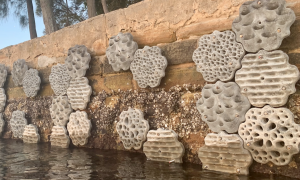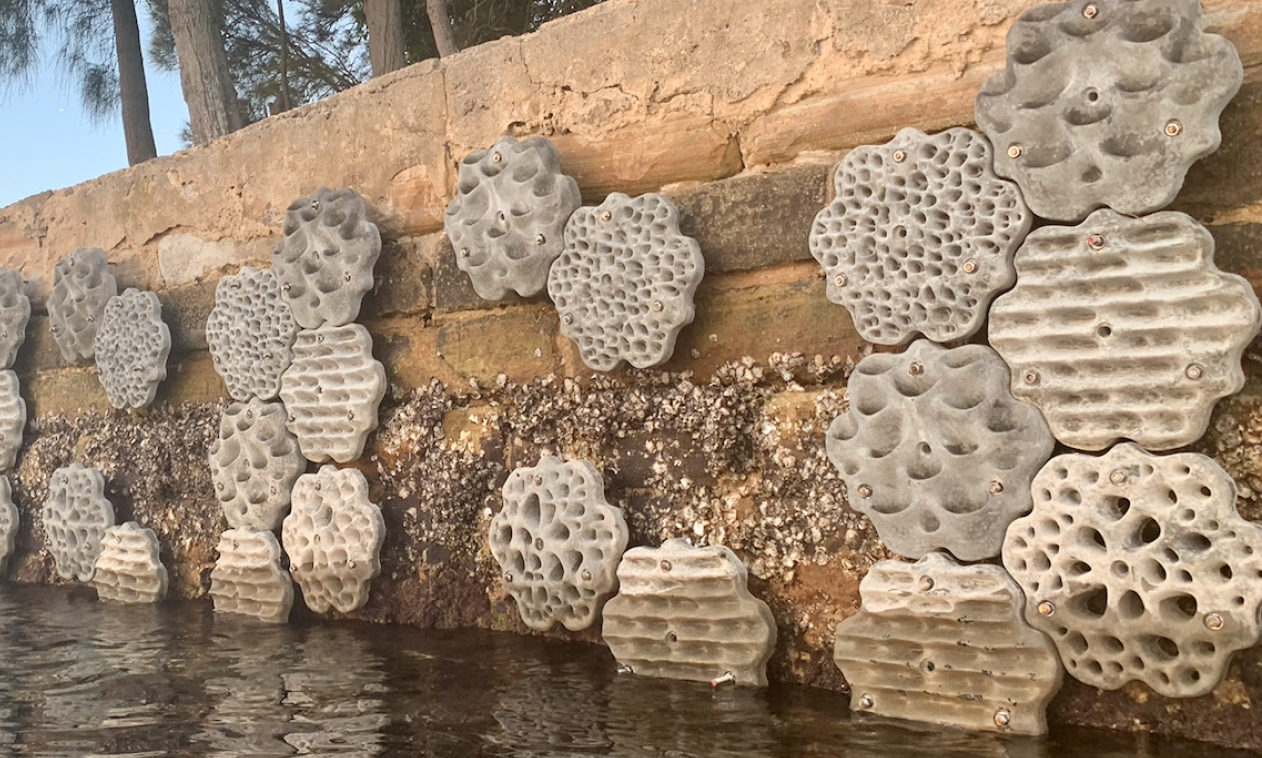By Dr Mariana Mayer Pinto
I would like to start this blog with a full disclosure–this is my first ever blog! So, apologies in advance if it’s not what you expected, I’m learning as I go.
My amazing colleagues from the UNSW Women in Maths & Science Champions program asked if I could write a blog about my research and I’ve chosen to write about a project of which I’m super proud and that we have just officially launched last week–the Living Seawalls project.

The project is a unique collaboration of science, government, philanthropy, industry and innovative design. It is incredibly fulfilling to be involved in this project, since we can see tangible benefits of our work in a very short period of time. Within weeks of deployment, the Living Seawall tiles at Sawmillers Reserve were colonised by a diverse marine community. Several species of fish were also frequently observed foraging around the seawall. In some cases, the complex microhabitats of the tiles were completely overgrown, as you can see in the photos below, and we have observed limpets, chitons, snails, oysters, barnacles, mussels and algae.
During the launch we had the incredible opportunity to show the work we have been doing in the past few months to all our supporters and general public.
The Living Seawalls project aims to investigate methods to enhance the ecological value of artificial structures in the marine environment such as seawalls and pilings. This project is an initiative of the Sydney Institute of Marine Science (SIMS), which builds on decades of marine green engineering that has been done in Sydney.
The Living Seawalls team is comprised by researchers from UNSW, Macquarie University, SIMS and University of Sydney and, one of the most rewarding things for me is the opportunity to work with amazing women such as Drs Katherine Dafforn and Maria Vozzo, and A/Prof Melanie Bishop.
Our team is currently assessing the ecological benefits of scaling up greening interventions on seawalls, by adding different types of habitat enhancing tiles to an entire seawall. We will be monitoring the tiles over time to answer questions such as how different microhabitats on the tiles influence colonisation of marine life and at what scale Living Seawalls can enhance important ecosystem functions in Sydney Harbour, such as filtration rates and primary productivity, which are directly linked to food and clean water supply.

The concrete tiles have been specially designed using 3D technology to mimic natural habitat features of Sydney’s rocky shores and are retrofitted to existing seawalls. The team is working with Reef Design Lab, a Melbourne-based design studio, to develop these ecologically informed structures.
I am looking forward to expanding this project to other places and types of structure. For more information, please visit our website: https://www.sims.org.au/page/130/living-seawalls-landing.
Follow Mariana on Twitter

